gogeos - Go library for spatial data operations and geometric algorithms
gogeos is a library for Go that provides operations on spatial data and geometric algorithms.
It provides bindings to the GEOS C library.
Download
Current release: v0.1.2 (Thursday, May 29, 2014)
Download .zip Download .tar.gz View source
Quick start
package main
import (
"fmt"
"log"
"github.com/paulsmith/gogeos/geos"
)
func main() {
line, err := geos.FromWKT("LINESTRING (0 0, 10 10, 20 20)")
if err != nil {
log.Fatal(err)
}
buf, err := line.Buffer(2.5)
if err != nil {
log.Fatal(err)
}
fmt.Println(buf)
// POLYGON ((18.2322330470336311 21.7677669529663689, 18.61…
}
Overview
Functionality
- Binary predicates - intersects, disjoint, etc.
- Topology operations - difference, union, etc.
- Polygonization, line merging, and simplification
- Prepared geometries (for better performance for common binary predicates)
- Validity checking
- DE-9IM
- Geometry info - area, length, distance, etc.
- IO - WKT & WKB read/write
gogeos is an open source project (MIT license).
Community
- Source code: GitHub project
- Issues tracker
- Mailing list: gogeos@googlegroups.com
- IRC: #gogeos on freenode
Installation
Requirements
- GEOS 3.3.8 or 3.3.9
GEOS must be installed on your system to build gogeos.
Ubuntu
$ apt-get install libgeos-dev
OS X - homebrew
$ brew install geos
From source (all OSes)
$ wget http://download.osgeo.org/geos/geos-3.3.8.tar.bz2
$ tar xvfj geos-3.3.8.tar.bz2
$ cd geos-3.3.8
$ ./configure
$ make
$ sudo make install
Installing gogeos
$ go get github.com/paulsmith/gogeos/geos
Examples
Binary topology operations
gogeos provides binary topology operations, which produce a new geometry from spatial analysis performed on two input geometries. For example, say we have these two overlapping polygons, A in blue and B in orange:
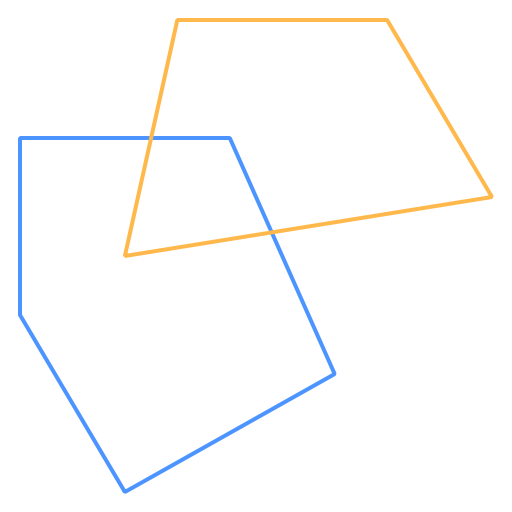
(NB: these graphics weren't produced by gogeos directly - I used the excellent draw2d package to render the output of gogeos functions.)
Then the following operations will produce new geometries in magenta:
A.Intersection(B)
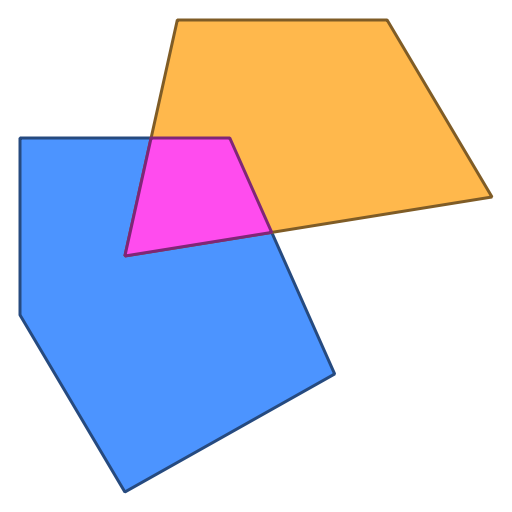
A.Union(B)
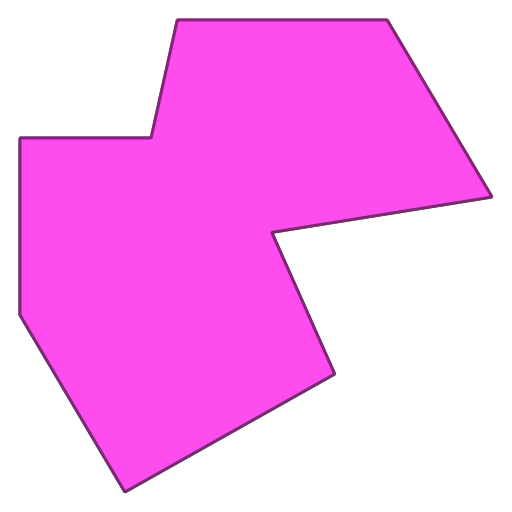
A.Difference(B)
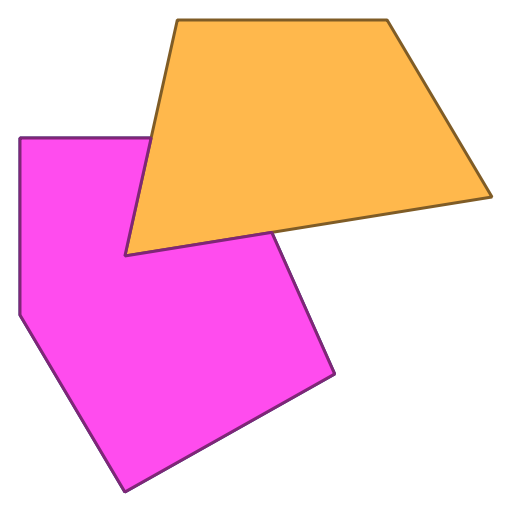
B.Difference(A)
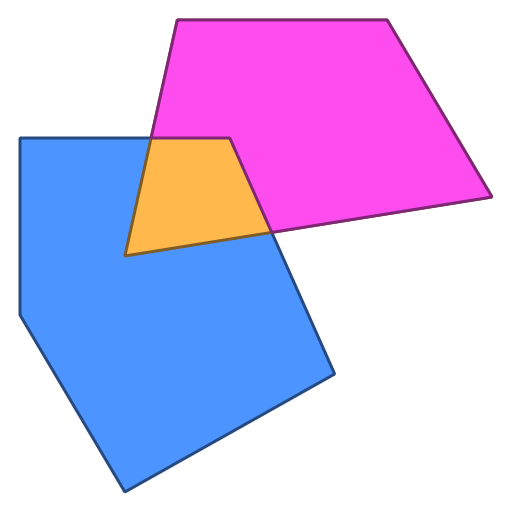
A.SymDifference(B)

Unary topology operations
gogeos can produce new geometries based on a operation performed on a single
geometry, perhaps with some input. For example, given a linestring geom
(orange), the Buffer() and ConvexHull() methods produce a new polygons
(blue):
geom.Buffer(2.5)
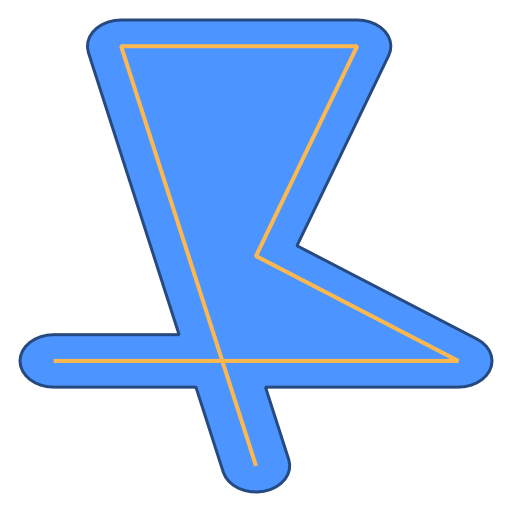
geom.ConvexHull()
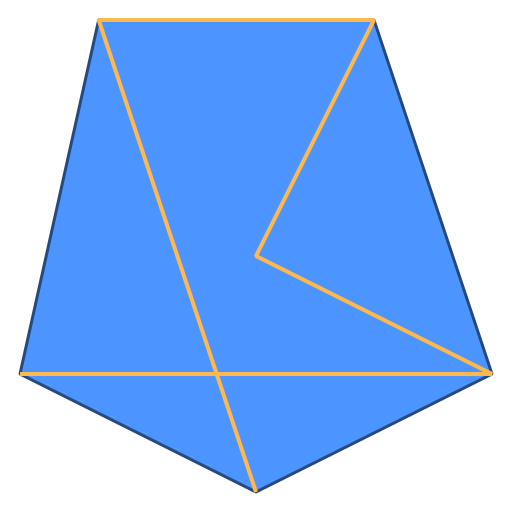
Merging linestrings
For a collection of fully noded linestrings, a new collection can be produced
that merges together the linestrings that touch only at their start and end
points. This is provided by calling the LineMerge() method on a
MultiLineString collection:
var linestrings = []*geos.Geometry{
// ...
}
coll := geos.Must(geos.NewCollection(geos.MULTILINESTRING, linestrings...))
coll.LineMerge()
Before
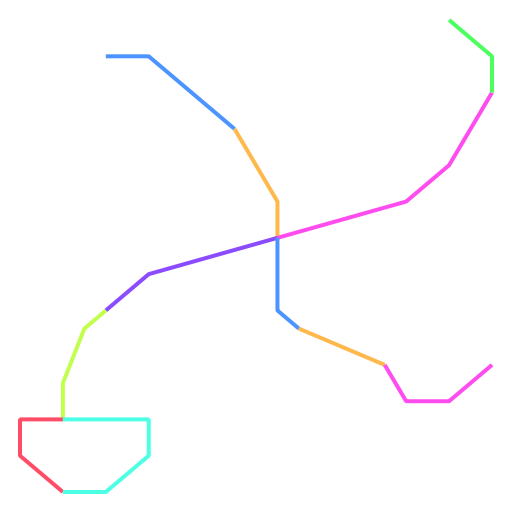
After
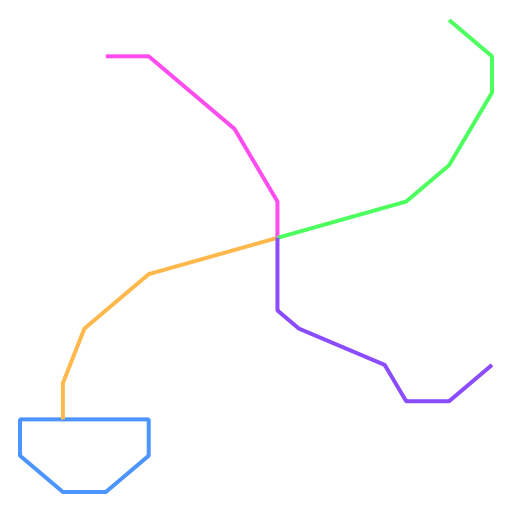
These examples were inspired by the developer’s guide to the JTS
